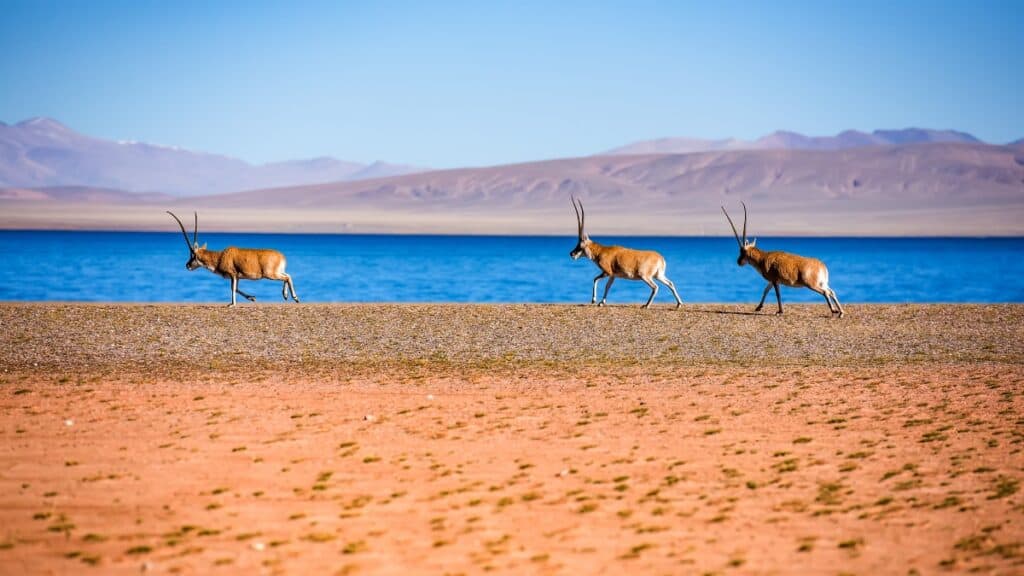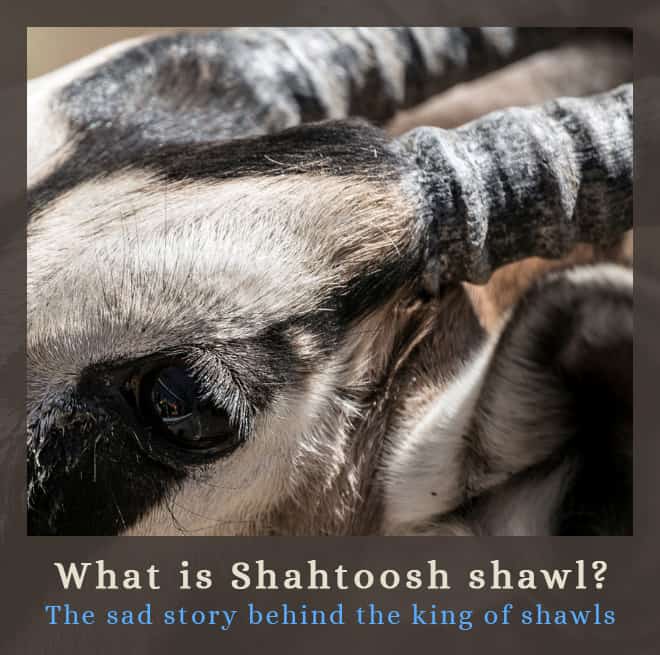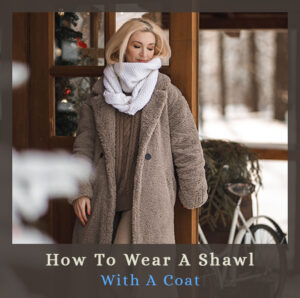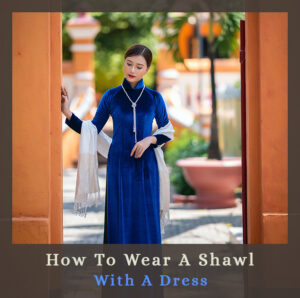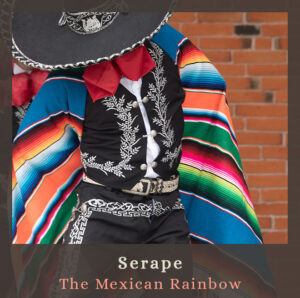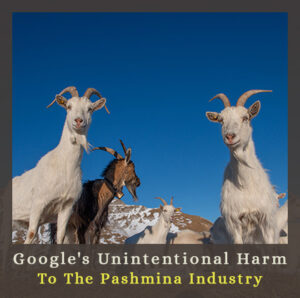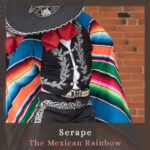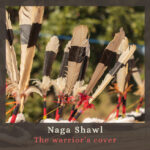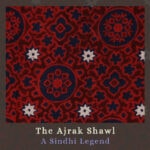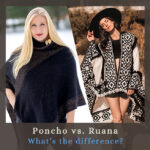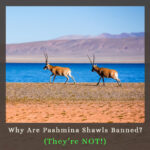Important note: The production of Shahtoosh shawls is illegal because it involves the killing of the endangered Tibetan antelope. Consequently, trading in Shahtoosh wool and shawls is banned internationally in order to protect this beautiful animal population
What is Shahtoosh shawl?
The Shahtoosh shawl is a rare and exceptionally luxurious shawl made from the finest wool, often referred to as the ‘king of wools’.
The name Shahtoosh means Shah = King, and Toosh = wool in Persian. This ultra-fine hair belongs to the endangered Tibetan antelope, also known as the Chiru.
These delicate shawls are incredibly lightweight, soft, and warm.
However, as mentioned, the production of Shahtoosh shawls is now illegal due to the protected status of the chiru.
Why are the Shahtoosh shawls banned?
Since the Chirus are wild animals, it is impossible to harvest their wool unless they are killed.
According to WPSI’s ‘Fashioned For Extinction’ report, the Chiru population has drastically declined due to hunting and killing to obtain their fine wool, leading to their classification as a near-threatened species.
The international production, sale, and acquisition of Shahtoosh shawls have been illegal under CITES since 1979 and banned in many countries to safeguard the dwindling Chiru population, preserve the fragile ecosystem they inhabit, and prompt a shift toward more sustainable alternatives in the contemporary fashion industry.
*Despite the ban, these shawls continue to fetch high prices on the black market, ranging from $4,000 to $40,000.
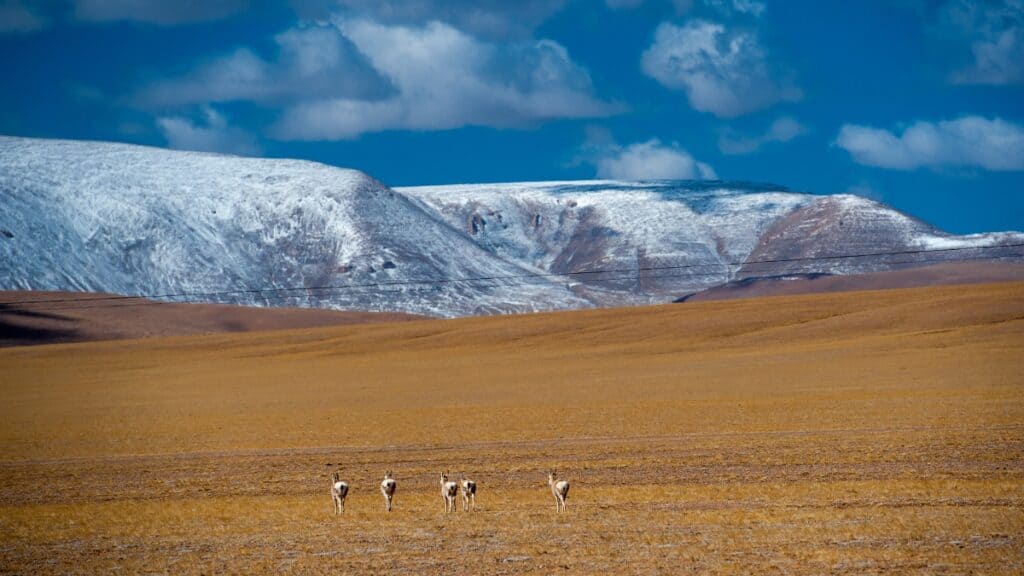
What is a Shahtoosh shawl made of?
A Shahtoosh shawl is crafted from the ultra-fine and rare wool of the Tibetan antelope (chiru). These antelopes are found in the Tibetan plateau at altitudes above 5,000 meters (!), where they grow a down coat to survive the harsh weather conditions. This down coat is the source of Shahtoosh wool.
Recognized as the finest animal wool in the world, Shahtoosh surpasses even Vicuña wool in terms of softness and quality. The down hair of the chiru measures an average fiber diameter of 11.45 microns, with some hairs as fine as 6.25 microns. Contributing to the shawl’s extraordinary softness, warmth, and lightweight.
Just to make it more clear, human hair is about 70 microns, and Pashmina fibers are somewhere between 13-19 microns. This is how fine the Chiru’s wool is!
This remarkable quality made the Shahtoosh shawls highly prized and valuable.
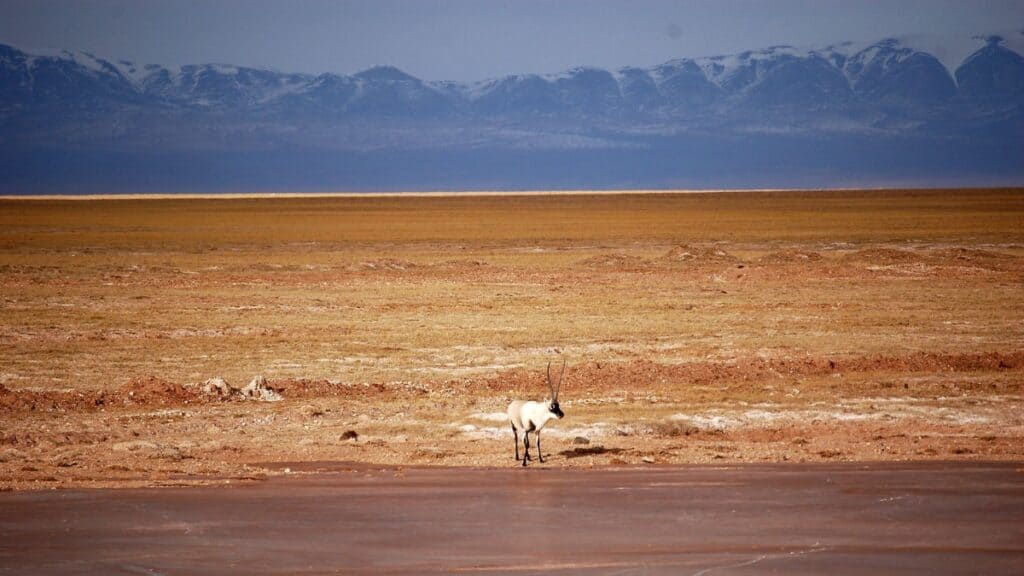
How Shahtoosh Shawls are made?
Crafting Shahtoosh shawls is one of the most intricate and specialized artisanal practices in the world, with the weavers and spinners in the Kashmir valley exclusively dedicated to this craft. Each shawl is carefully handmade on traditional wooden handlooms by experienced artisans who have honed their skills over decades.
Given the super fine nature of Shahtoosh threads, they cannot be used in machines, and every step in the process is carried out manually. As a result, the creation of a single Shahtoosh shawl can take anywhere from a few months to an entire year (or even more). This time-consuming and labor-intensive process contributes to the unique appeal and exclusivity of these luxurious shawls.
What is the origin of the Shahtoosh shawl?
The origin of the Shahtoosh shawl can be traced back to the Kashmir region in India, where the tradition of weaving fine woolen textiles has existed for centuries.
The Shahtoosh wool, obtained from the Tibetan antelope, was brought to the Kashmir valley by traders who traveled the ancient Silk Road. Skilled artisans in Kashmir then wove the delicate fibers into luxurious and exquisite shawls, which became highly sought after by royalty and the elite for their exceptional quality.
Shahtoosh shawls gained their reputed status long ago. They have a long and prestigious history, with Emperor Akbar once known to have utilized Tus or Shahtoosh in the imperial wardrobe on a large scale.
What is the difference between Shahtoosh and Toosh?
‘Shahtoosh’ and ‘Toosh’, or ‘Tus’ all refer to the same product, a luxurious shawl made from the extremely fine and rare wool of the ‘Chiru’. Sometimes, the term ‘Toosh’ (or ‘Tus’) is used as a shortened version or alternative to ‘Shahtoosh’.
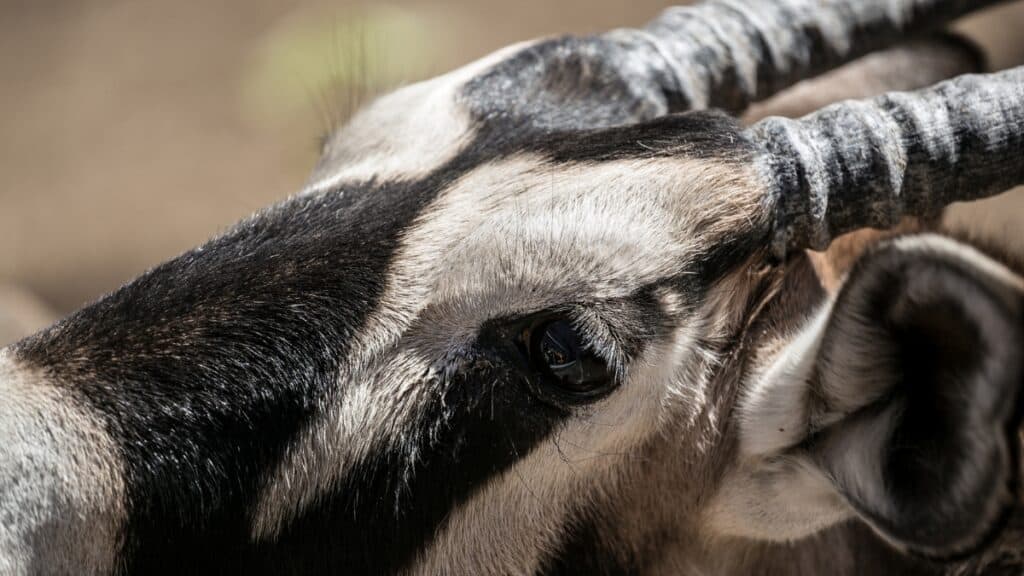
Why are Shahtoosh shawls famous?
Today the most famous thing about the Shahtoosh wool is its ban!
But before the ban, this wool was considered to be the most lightweight and soft to the touch of all wools.
Shahtoosh shawls are famous for their unparalleled softness, warmth, lightweight, and rarity. All these characteristics, with the difficulty in obtaining the wool, made them extremely valuable and sought-after luxury items.
How much is the Shahtoosh shawl cost?
Today one can’t purchase Shahtoosh shawls unless he is endangering himself with illegal activities and supporting the killing and endangering of the Tibetan antelopes.
As mentioned, when they were available on the market, Shahtoosh shawls were extremely expensive, costing thousands of dollars, and sometimes more. The price depended on factors such as the size, quality, and intricacy of the design.
Despite the ban on the Shahtoosh trade, unfortunately, they might still be found on the black market, sometimes under the cover of the finest Pashmina.
Is Shahtoosh better than Pashmina?
Shahtoosh shawls are generally more lightweight and warm than Pashmina shawls, but it depends on the specific width of the fibers. While Shahtoosh fibers vary mostly between 7-12 microbes, Pashmina’s fibers vary mostly between 12-16 microns. The width of the fiber depends on where was the wool taken from. The softest fibers are on the neck of the animal. So the finest Pashminas can be of the exact same quality as Shahtoosh.
But what really makes the Pashmina better is that it is legal, and you can enjoy this exclusive, warm, lightweight, and cruelty-free quality all-heartedly.
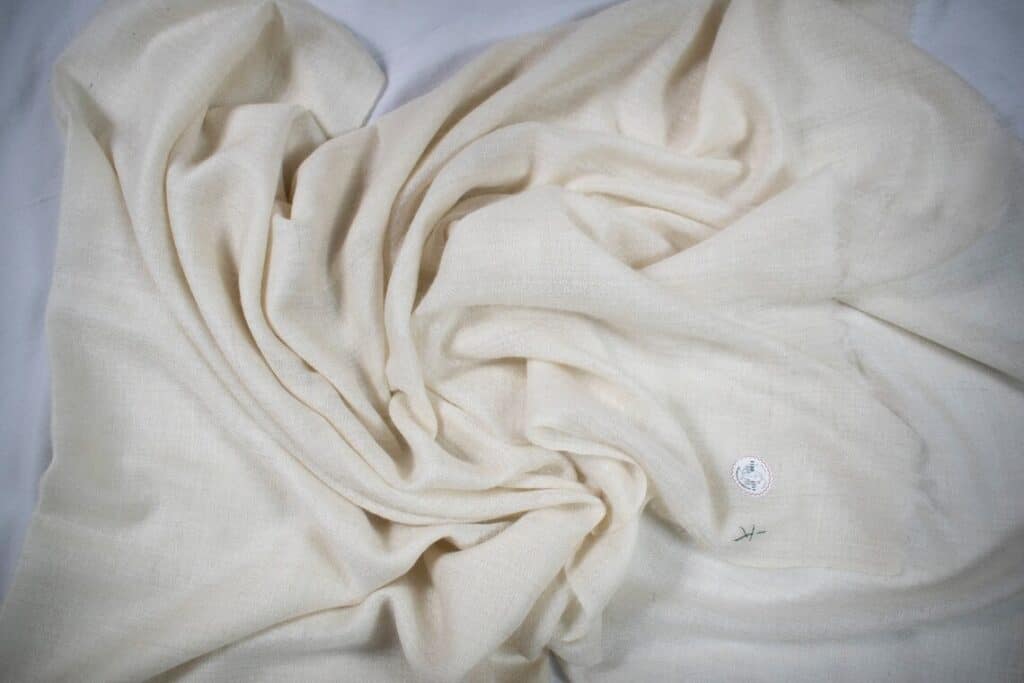
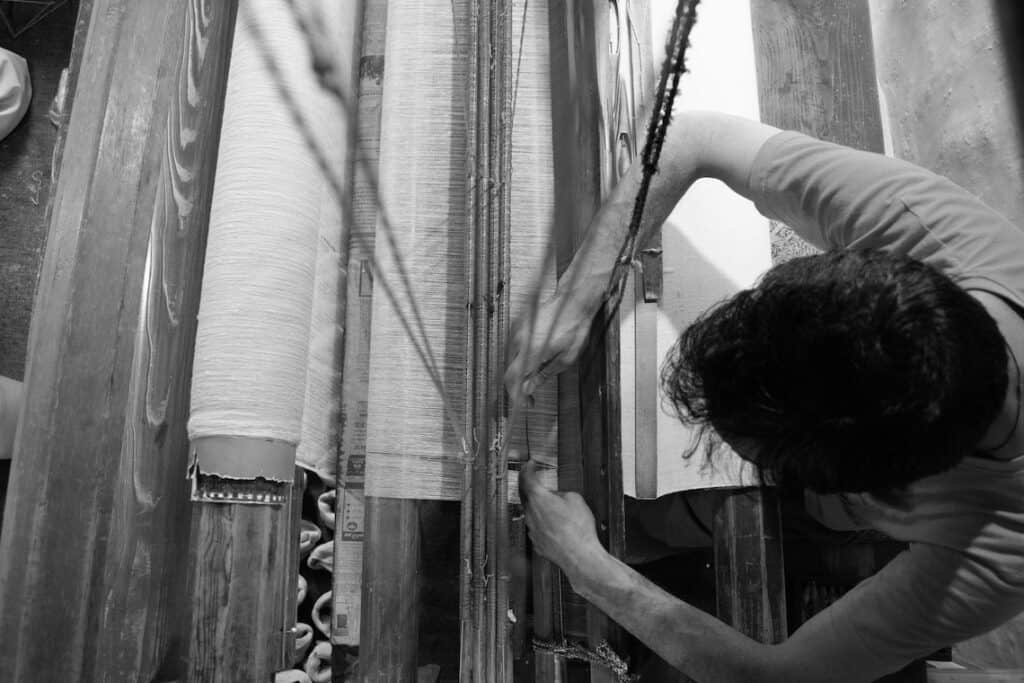
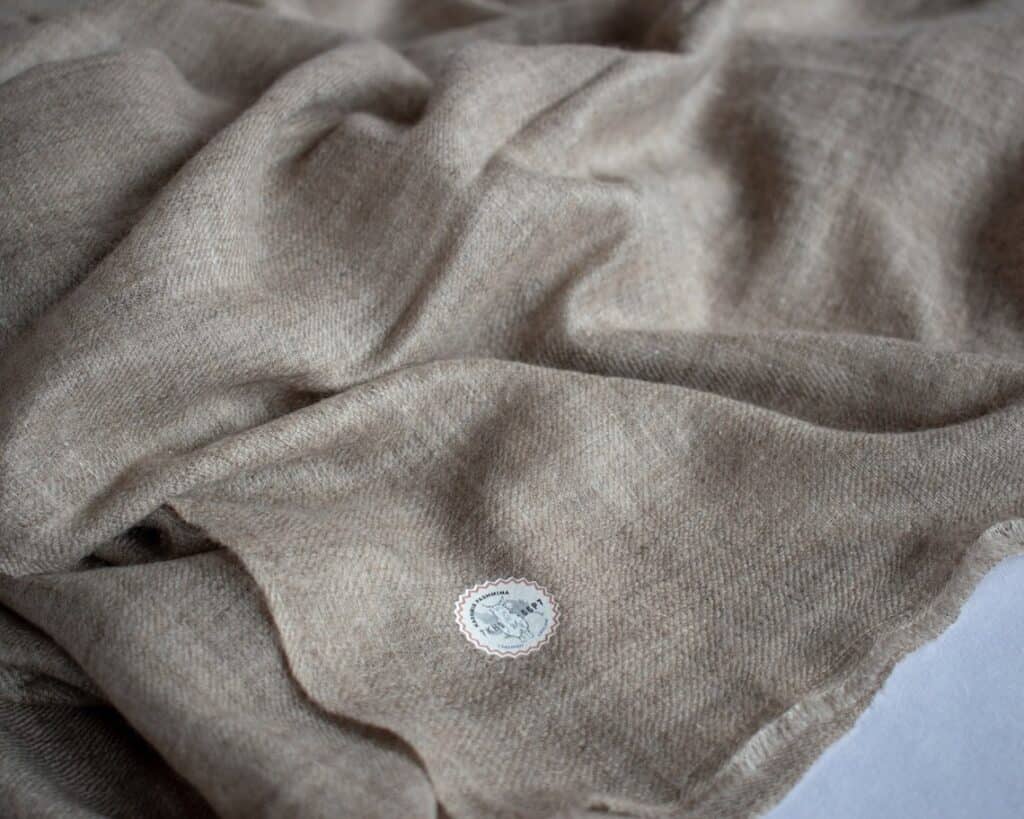
By BabaPashminaStore on Etsy.
Is Shahtoosh more expensive than Pashmina?
Since Pashmina wool is widely available and legally traded, even though its softness, lightweight, and warmth are deeply honored, and the price of a real Pashmina is relatively high, it is more likely that a Shahtoosh shawl will be much more expensive.
Not to speak about the fact that the illegality of trading the Shahtoosh makes it be traded on the black market only, and there when it comes to quality and price, the sky is the limit.
What is the most expensive Legal wool?
Vicuña wool is often considered the most expensive legal wool available in the market.
The vicuña is a small camelid native to the high Andes of South America, particularly in Peru, Bolivia, Argentina, and Chile. Vicuña wool is incredibly fine, lightweight, and warm, with a diameter of about 12 microns, making it even finer than some types of Pashmina wool. This wool is scarce and difficult to obtain, as the animals can only be shorn every two to three years, and they produce a small amount of fleece.

Vicuña wool’s rarity, quality, and labor-intensive process of obtaining and producing the fibers contribute to its high price. Vicuña garments, such as shawls or coats, can easily cost thousands of dollars (and sometimes, much more!), making it the most expensive legal wool in the world.
Wrapping it up
In the luxurious & fantastic world of shawls, the Shahtoosh once reigned supreme, coveted for its remarkable softness, lightweight warmth, and rarity. However, as we’ve explored, the cost of this luxury was a staggering toll on the endangered Tibetan antelope population. Today, while the allure of Shahtoosh shawls persists, it’s vital to remember the dire consequences that their production brings. The ban on Shahtoosh serves not only as a crucial step to protect the chiru, but it also challenges us to redefine luxury and shift towards sustainable and ethical alternatives like the Pashmina and Vicuña wool. The narrative of the Shahtoosh shawl is an important reminder that true luxury should never compromise the well-being of our planet and its inhabitants.
